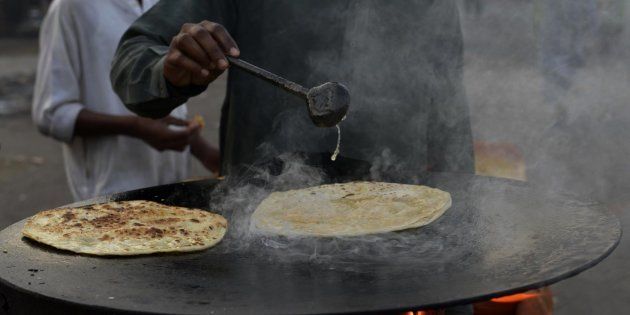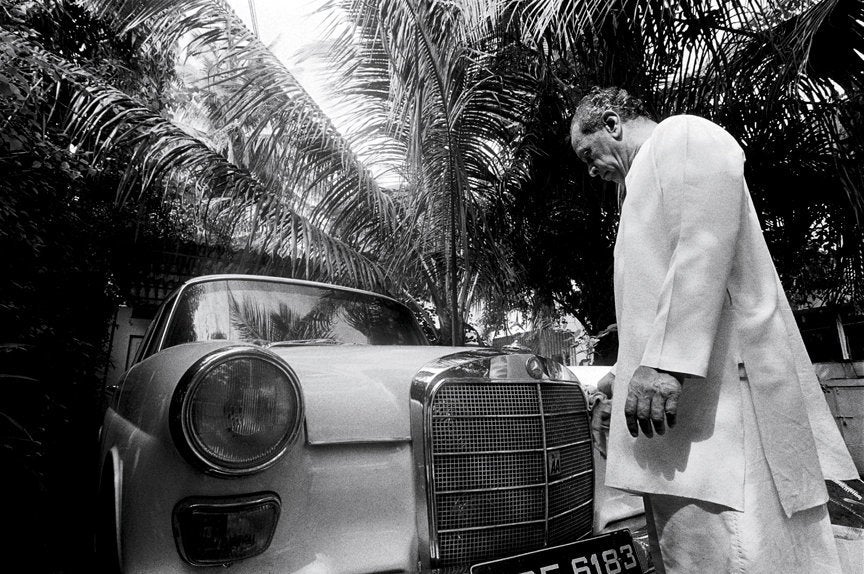
What's not to love about starting the day with thick aloo ke paranthe, straight from the tawa and garnished with a fat dollop of melting butter. Or, a crisp golden dosa folded around properly spiced aloo masala. These breakfast staples have delighted us Indians down the ages, but the unpalatable truth is they deprive our bodies of much needed morning nutrition.
"Most popular Indian breakfasts are made of refined flour or maida, and are deep-fried," explains G.S. Sudharani, a dietician with Apollo Sugar Clinic, Hyderabad. There is literally no nutrition to be derived from maida. What makes aloo ka parantha a digestion nightmare is the fact that maida is paired with the starchy potato, which too is usually fried, over-cooked, and robbed it of its nutrients.
"It is easier to single out what is unhealthy than what is good for our health," says Delhi-based nutritionist, Ishi Khosla, who is also the author of Is Wheat Killing You?
But when it comes to figuring out what is healthy, the considerations vary from person to person. "People have different requirements when it comes to their health... what works for me, may not work for you based on age, energy requirements and other such factors," Khosla says.
There is no problem of choice when it comes to healthy breakfast. Eggs, juices, yoghurt, porridge and fruits are all popular. But often, people give these a miss for sinful traditional Indian breakfasts.
We have come up with a solution that does not involve a complete eschewal of these perennial palate pleasers. We are simply giving them a nutrition enhancing makeover without compromising on the taste.
Aloo Parantha:

The savoury potato-stuffed bread is not just a popular breakfast item, it works well as a hearty meal any time of the day. But beware. "As it is cooked and juiced up with plenty of oil or ghee, and stuffed with aloo, it is not an easy food to digest," warns Sudharani. "1 medium aloo ka parantha easily contains over 400 calories and a fat content of approximately 11gm."
Make it healthier: Try using other grains such as ragi, jowar, bajra or even a mix of these. A combination of the three provides a higher content of digestible fibre than wheat. "Switch to heart friendly oils like canola oil," recommends Ritika Samaddar, regional head of the Department of Clinical Nutrition and Dietetics, Max Super Speciality Hospital, New Delhi. Finally, skip the starch-heavy potatoes. Instead, add crushed peas, onions, capsicum, leafy vegetables and carrots. "You could also try roasting your morning parantha instead of drowning it in oil," Sudharani suggests.
Check out these recipes for healthy parathas in the morning.
Kachori:

Bad news for those who love their hot kachoris: "The kachori literally doesn't contain any nutrients," says Sudharani. "It is 100 percent carbs, sans any fibre and contains a whopping 14gm of fat." Deep fried, and made of refined flour, aka maida, one large kachori can contain as many as 320 calories.
Make it healthier: For starters, try this diabetes friendly recipe."Instead of maida, try to eat kachoris made with whole wheat flour," recommends Samaddar. "Also stuff your kachoris with lentils, or vegetables to get some nutrients." Many times, stale kachoris with stuffing lose what little good nutrition their insides held. Try to stick to fresher stuff.
Kulcha Chhole:

You could get away with the chhole, but you will certainly do your body a big favour by giving those maida-laden kulchas a miss. "Kulchas have zero fibre content, and a high glycemic index, which plays havoc with blood sugar levels," cautions Samaddar.
Make it healthier: Eat your chhole without the kulcha. Or, try whole-wheat kulchas. Also, if you like raw onions with the preparation, try to consume fresh onion rings that have been washed and cut at home. The hygiene at street stalls is often questionable. Add a few mint leaves as well to eradicate onion breath, and mix spices or seeds such as nigella and sesame to the kulcha. Nigella seeds help prevent cardio diseases and Type 2 diabetes, while sesame seeds are loaded with vitamin B, calcium, magnesium and other essential nutrients.
Check out this no-oil chana masala recipe.
Masala Dosa:

Contrary to popular belief, a classic South Indian breakfast is not the healthiest way to greet the day. "1 masala dosa can contain as many as 387 calories," says Sudharani. "There is also a loss of nutrients when the food becomes brown in colour -- such as the small quantities of vegetable protein and amino acids from the grain used to make the dosa."
Make it healthier: Idlis, which are prepared from a combination of steamed rice and lentils, work well as an excellent alternative along with vegetable curry. Skip the aloo and instead opt for a combination of mixed vegetables cooked as little as possible, or even a dairy product such as paneer. Enjoy as much fresh chutney as you like, provided they are more on the savoury side than sweet. "All these dishes allow for easy incorporation of seasonal vegetables, and can often be enjoyed with dahi, so try to include those in your diet," says Khosla.
Here is a super healthy chickpea dosa recipe.
Vada Pav:

The popular Maharashtrian breakfast or snack item, vada pav, is easy on the pocket, but not the hips. Deep fried maida buns sandwiching a hunk of potato filling equals approximately 280 calories, according to Sudharani.
Make it healthier: Try this healthy vada pav recipe by Saransh Goila, if you cannot resist the 'Indianised burger'. Otherwise take Sudharani's advice and "choose whole wheat bread, and keep your filling limited to boiled and mashed vegetables."
Also See On HuffPost:
